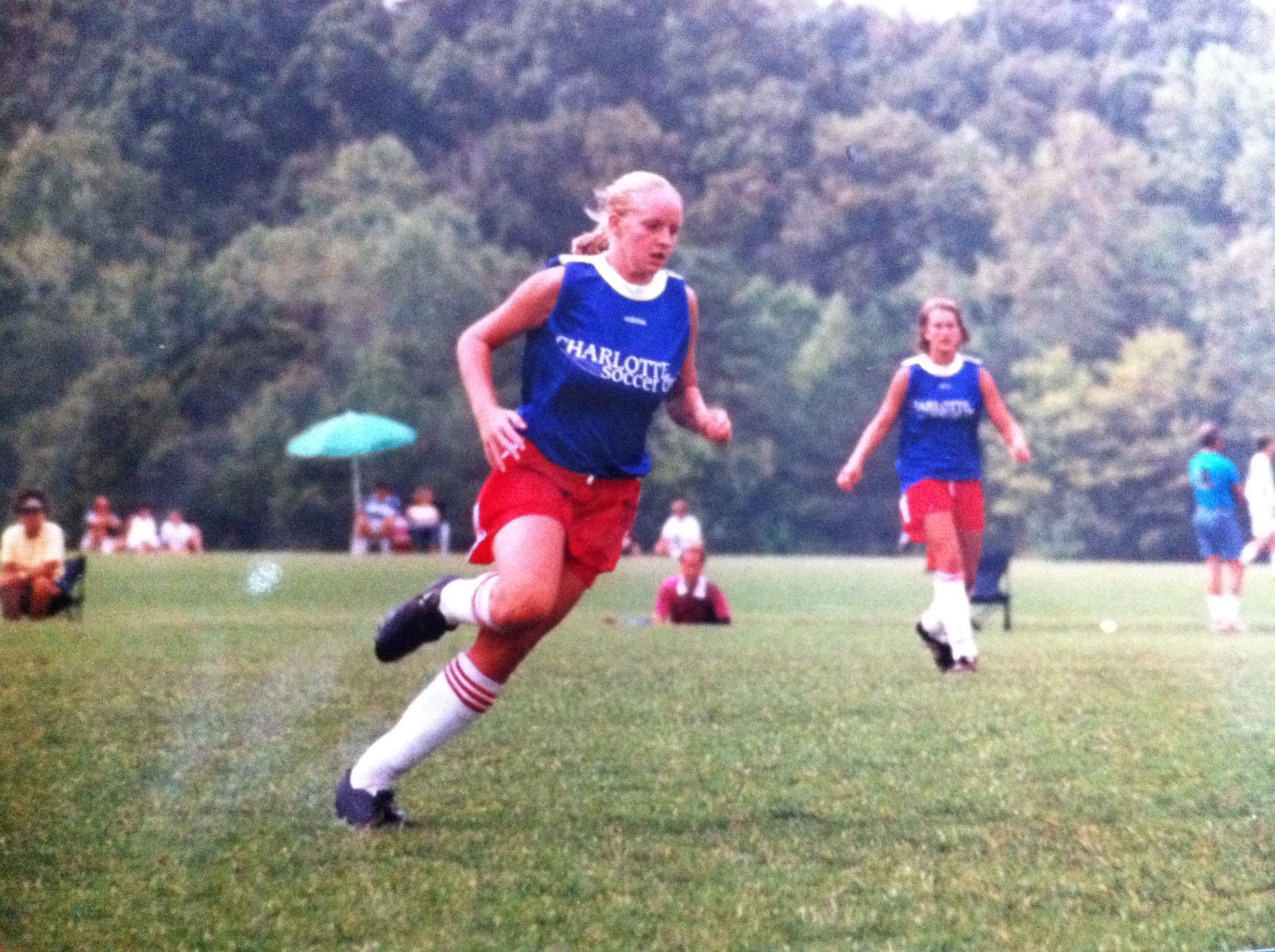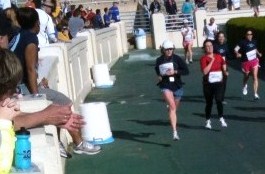My Charlotte elementary school held an annual field day competition – for me, the highlight of the year. Back then, I spent many recess periods reading novels in the shade of the old campus’ stately oaks, too introverted to insert myself in the hopscotch and foursquare games and friendship bracelet-making parties of the other girls. But when field day rolled around, I showed up in Umbros and a t-shirt, handed my thick glasses to my teacher and smoked all of my classmates in the fifty-yard dash.
 Throughout my soccer career, I wasn’t always the most talented player on the field, but I was almost always the fastest. As a right midfielder, I loved to sprint down the sideline with the ball at my feet, beat the defense to the corner flag, wait for my teammates to catch up and curl a cross back to the top of the box for a shot on goal. I never led my team in goals scored, but I often led it in assists. During the spring of my senior year, my high school coach moved me to defense; prior to each game, he instructed me to mark the opposing team’s fastest player.
Throughout my soccer career, I wasn’t always the most talented player on the field, but I was almost always the fastest. As a right midfielder, I loved to sprint down the sideline with the ball at my feet, beat the defense to the corner flag, wait for my teammates to catch up and curl a cross back to the top of the box for a shot on goal. I never led my team in goals scored, but I often led it in assists. During the spring of my senior year, my high school coach moved me to defense; prior to each game, he instructed me to mark the opposing team’s fastest player.
My best friend on my high school and club soccer teams could juggle the ball till the sun went down; I couldn’t juggle the ball for more than five seconds. But I had a killer cross, could throw the ball farther than most of the men’s team, and could outrun the whole conference. If I’d run track, I’d have specialized in the 400. And on the soccer field, I made my living as an athlete.
Nearly 20 years after I took home my first blue ribbon for the 50-yard dash and 14 years after I first stepped onto a sweet-smelling, freshly mowed soccer field, I learned that my little sister likely wouldn’t have the opportunity to chase her own dreams. After her Batten disease diagnosis, Taylor ran two 5Ks. But she last crossed a finish line in May 2009. And today, that singular moment feels as if it happened in another lifetime, to another family.
When doctors discovered the fatal flaw in Taylor’s genetic makeup, I ran to escape it. When adrenaline coursed through my veins, I felt unbeatable. Rather than turn to alcohol or drugs in an attempt to blur the sharp edges of my family’s tragic turn, I became addicted to running.
But Batten disease didn’t tire easily, and it became clear that we had a long fight on our hands. One morning, in a moment of perfect clarity, I realized that I wouldn’t find salvation at the end of a 50-yard sprint. So I did the only things I knew to do. I gathered all of my stamina. And I reinvented myself as a distance runner.
After passing the 13th mile marker during my first half marathon, I wanted to quit. My lungs burned. A fire raged in the soles of my shoes. A soccer player accustomed to sharing a field with 21 others, I discovered at that moment that running can be a very lonely sport – if you let it. But then, I rounded a corner and came upon a gray-haired lady sitting in a lawn chair on the side of the road. As I approached her, her eyes met mine. A look of understanding crossed her face; at that moment, I believe she understood me better than I understood myself. She smiled, put her hands together, and yelled, to me and only to me, “You can do it!”

I probably overtook 100 people in that final .1 mile, sprinting at full speed through a tunnel of spectators under a clear winter palette dotted with the skyscrapers of uptown Charlotte.
About five months later, I entered a spring race held among the blooming dogwoods and azaleas on the campus of my alma mater; in just under 90 minutes, I jogged through the tunnel and onto the oval circling the field at Kenan Stadium, where my legs found new life and carried me past almost everyone and across the finish line of the Tar Heel 10 Miler.
The races have gotten a lot easier since I christened my long-distance career. Despite a sore Achilles, I finished in the top one-fifth of the field in the Tar Heel 10 Miler this past April. A couple of weeks ago, I went out and ran 13.1 on a beautiful Saturday afternoon – just because I felt like it. But our battle with Batten disease – our search for the invisible finish line – has gotten more difficult with each passing year. Sitting here now, writing these words on New Year’s Day, I know that 2012 will be, without question, the toughest test yet.
I also know, from experience, that it is indeed possible to accelerate when, moments before, you thought you had nothing left to give. And I know that no matter how painful or exhausting it may be, I must be faster in 2012 than I have ever been before.
Yesterday, I ran 10 miles in my last personal physical challenge of 2011. My time for the first mile? 10:01. For the tenth mile? 7:24.
